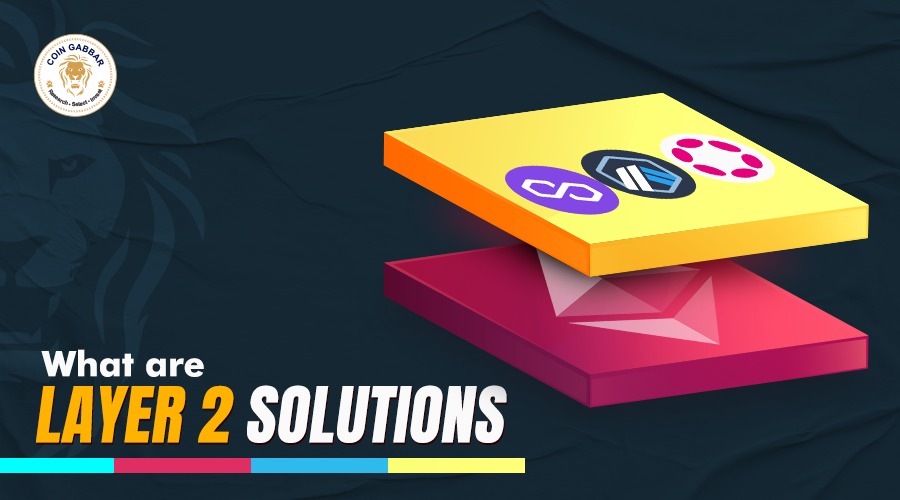
Scalability has always been an issue for the mass adoption of blockchain and distributed ledger technology. Often, the network cannot handle an excess number of users, sometimes security is compromised, and sometimes the fee is too high for everyone to use the network.
Here, the Layer2 solutions come into the picture; these are built on top of the existing blockchain with cheaper gas fees or faster transaction speed, often both, without compromising the blockchain security. Thus, this can be considered an update to the existing blockchain infrastructure.
Most blockchains are open-sourced in nature, meaning it allows other people from the community to improve them; developers can suggest changes to the DAOs or even go on with a hard fork. But instead of waiting around for all these, developers can develop their own layer 2 solutions on top of the original blockchain, which will be called Layer 1 blockchain.
The current focus of the blockchain community is global adoption, both institution, and retail. Scalability is one of the issues the industry needs to tackle, or the whole infrastructure might collapse. This is where Layer 2 solutions come into the picture; they help simultaneously increase the scalability and throughput of blockchains like the Ethereum network. Layer 2 solutions boost the throughput, allowing complete decentralization, transparency, and security.
Let us take an example; Ethereum is one of the biggest, busiest, and arguably the most secure blockchain out there; but that does not mean that it has no flaws. For instance, Ethereum transactions are slower than traditional finance instruments like Visa and Mastercard, and the gas fees are terribly high. Layer 2 solutions like Polygon(previously known as Matic) are built on the sidechain to facilitate faster transactions with lower gas fees, making them swift and scalable, simultaneously protecting the integrity of the concept of blockchain technology.
Even these Layer 2 solutions have their own pros and cons; some might have to compromise security while others might have to compromise functionality. Users can select the transaction medium according to their own needs and preferences.
For successfully deploying and operating on the mainnet, a link is established between the mainnet and Layer 2 blockchain solutions where transactions are regularly uploaded on the Layer 1 ledger in specific periods. It is important to note that only successful and confirmed transactions are published on the Layer 1 ledger since they are immutable in nature, theoretically speaking.
Think of Layer 2 solutions as a side infrastructure built to unload the traffic from the existing infrastructure, where the majority of processing is accomplished. Then, the sidechain reports back to the central infrastructure to complete the process.
To conclude, Layer 2 takes off the load from Layer 1 infrastructure while ensuring the transparency and security of the blockchain are maintained.
Layer2 solutions mainly focus on diverging the traffic from the mainnet or the Layer1 network; over the years, many Layer2 solutions came up with different solutions; but only a few succeeded in managing to perform. We can map these network solutions into categories based on their work.
State channels are two-way communication mediums between the buyers and sellers, eliminating the middleman, in this case, the third party. State channels significantly improve transaction speed and decrease transaction costs. Using the concept of multisig, the involved parties can send each other coins when the channel is open without going through the mainnet and its miners. The transaction details are published on the blockchain when the channel is closed.
Bitcoin's lightning network is one of the most notable examples of using the concept of channels as a Layer2 network.
Rollups are another set of scaling solutions that, as the name implies, roll up setups transactions which are then presented to the blockchain as a single transaction.
In practicality, Rollups can be divided into two parts:
Zero-knowledge Rollups (ZK-Rollups) combine removed transactions and generate a SNARK (Succinct Non-Interactive Argument of Knowledge). Because a validity proof, or non-interactive argument of knowledge, is the only data recorded on the primary blockchain, gas fees are lowered by processing only this data. Thus, the security infrastructure and decentralization are maintained, and simultaneously near-instant transactions are now possible.
ZK- Rollups also have their own disadvantages; smaller applications with less on-chain activity may have difficulty computing ZK-Rollups. ZK-Rollups are not always Ethereum Virtual Machine (EVM) compatible. It is important to note that the user can influence the transaction ordering.
Optimistic Rollups run parallel to the main blockchain and do not contribute to the computation power; after the transactions are complete, the record is submitted to the L2 chain. These transactions are reported to the main blockchain, further optimizing transactions by reducing the cost of gas. With Optimistic Rollup, the gas fee is significantly lowered, and the throughput of the mainnet is also increased. However, the withdrawal time is considerably high; some users have reported that the wait time even lasted weeks; in some cases, the transaction is challenged.
As a volatile field, both in tech and price, the current technological and usability prowess of Layer 2 solutions on premium blockchains like Bitcoin and Ethereum will be challenged. But it is important to note that as the busiest blockchain with some scalability issues. Ethereum is changing fundamentally, and all the above-mentioned issues will be addressed by the mainnet itself.
As a user, it will be interesting to see how these Layer 2 protocols will adapt to the changing situations and how they will evolve in their ecosystem.
